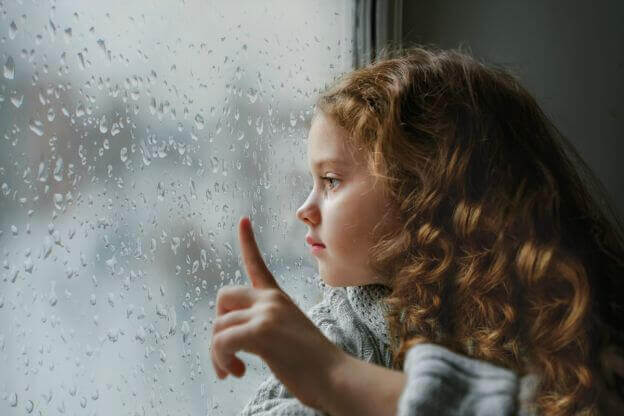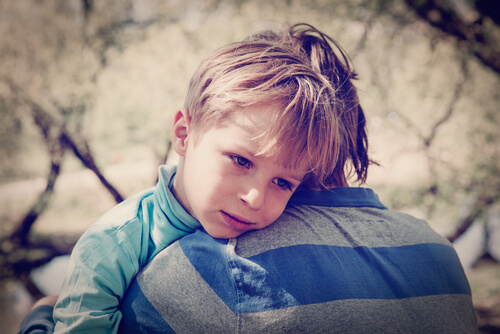Childhood Suicide - the Case of Samantha Kubersky

Children represent the most vulnerable part of our society. Their honesty and ingenuity make them easy targets for any kind of mockery or deceit. Likewise, they are often the ones who are nasty to others without really realizing the damage they’re doing. For that reason, childhood suicide is still a complex subject. It has many nuances and the danger of making a mistake with children who behave like this is great.
Death is an event which is difficult for children to understand. Faced with the death of a loved one, many children keep asking about them. Others continue including them in their present lives. Meanwhile, others are satisfied with the classic “they have gone to a better place.” The fact is that the explanations a single child can receive about this subject can be multiple. All of them can be very different from each other and not always correct.
That being said, accepting that youngsters can think about suicide is something which is beyond our understanding. In adulthood, it’s common that in certain circumstances we could fantasize about the idea of committing suicide. Of course, without carrying it out. On the other hand, a mature person is aware that death is something irreversible. Yet a child may not be so clear on this. Childhood suicide continues to be a subject with many questions but very few answers.
Childhood suicide – the case of Samantha Kubersky
On 2 December 2009, Samantha Kubersky’s mother found her 6-year-old daughter’s dead body. She had wrapped a belt around her own neck and hung herself from the top of a cradle. Despite the attempts of her family members and health workers, nothing could be done to save her life.
Hours earlier, the girl had been arguing with her mother. Both the mother and one of her sisters were in different rooms when tragedy struck. According to the police, there was no evidence to suggest that her family had anything to do with the tragic incident.
It seems unbelievable that such a young girl would make the decision to do something like that. There was a lot of speculation about whether this childhood suicide could have been an accident. But this theory didn’t match the evidence the police found. Many questions emerged. Was it a game which had gone wrong? Was it just her way of running away from the anger caused by the previous discussion with her mother? Was her behavior a way of hurting her mother? Or was it her own guilt which surfaced?
“If you change the way you look at things, the things you look at will change.”
-Wayne Dyer-

Karl Menninger and the components of suicidal behavior
Suicide can be studied from a sociological or psychological point of view. In Samantha’s particular case, the psychological factor played a fundamental role. One of the theories which better fits this case is the one proposed by American psychiatrist Karl Menninger.
According to his various studies on the subject, he came to an interesting conclusion. Suicide can be conceived as an inverted homicide. The anger and hatred a patient feels towards another person could be the cause of his own death. He found three components of hostility: the desire to kill, the desire to be killed, and the desire to die.
On the other hand, it’s extremely rare to find a case of childhood suicide at such an early age. Children under the age of 10 don’t usually conceive suicidal ideas unless there are certain risk factors involved. Thus, the main subjects to be investigated by the police were those in Samantha’s closest circle, her direct family.
Ruling out foul play
Despite how it appears, there was no evidence to suggest that the girl had suffered any type of abuse. The people who knew her highlighted her cheerful and kind nature. This just made the fact that she took her own life even more incomprehensible. Was Samantha really aware of what she was about to do? According to psychiatrist Kirk Wolf, she was not aware at all.
“Until they are 9 or 10 years old, children don’t yet understand the true meaning of death. At this age, they discover that it marks a point of no return.”
This statement was strongly supported by the agents who were in charge of the case. From the beginning, they categorically denied that a 6-year-old girl could have committed suicide. Even after forensics ruled that it was suicide, the idea that Samantha didn’t understand what was about to happen to her was still valid.
Should we talk to children about suicide?
This leads us to ask ourselves if it’s advisable to talk about suicide with our children. It’s necessary that death, in general terms, is not seen as a taboo subject for them. It’s a very difficult and complicated issue, so we must treat it with respect and empathy.

Talking with them about a matter they’ll have to face sooner or later is very beneficial. Death is an inevitable process which will come for us all someday. We all have to endure very hard situations throughout our lives. That is why we must make it clear to them that there is always an alternative solution to suicide. Although, at times we might not able to see it.
In this sense, we should let them know that suicide is a topic like any other, one they can talk about. Thus, they’ll learn to express their feelings about it, whether they’ve experienced the suicide of a relative or not. Letting them share their fears and problems can prevent tragic and extreme decisions, both in the present as well as in the future.
This text is provided for informational purposes only and does not replace consultation with a professional. If in doubt, consult your specialist.








